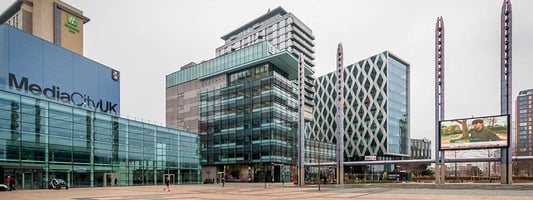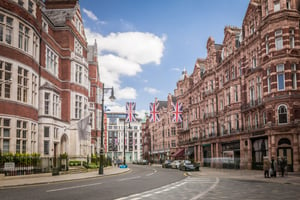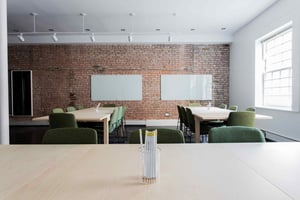Leading workplace consultant, Saracen Interiors has committed to growing its business in the North...
Office perks - These Extras Will Make Staff Much Happier
There is much to be said for a happy workforce. Everybody wants to feel happy, confident and secure in the workplace, and it is a bonus for both employer and employee. Evidence suggests that more than 12% of all sickness absence days in the UK can be attributed to mental health conditions - and whilst anybody and everybody can suffer from poor mental health, it’s in everybody’s best interest to ameliorate the office environment, and provide the happiest, most productive and most healthy atmosphere possible.
Below we’ve listed are a few basic triggers to get you taking in the bigger picture; changes which, whilst only small, can make a big difference to the daily life of everyone working in the environment.
Bring the outside in
The term ‘biophilia’ has been bandied around for the past couple of years, but this fancy word describes something very simple - our innate love of nature. Nature is known to de-stress and soothe, and being in a desk cubicle under fluorescent lighting for eight hours is known to have the opposite effect. But many of us can’t avoid being in the office all day! The solution? Bring the outside in. Investing in a green wall is a statement way to bring wonderful green foliage into the office, but investing in simple greenery here and there, from desk plants to windowsills, has the same effect. Bringing that green in increases wellbeing levels, but they are also photosynthesising all day long - so a few good house plants will also be improving air quality, as they pull in CO2 and provide lots of new oxygen.
Get on the move
Boost collaboration and health at the same time! Communal spaces encourage departmental and inter-departmental chat. The more brains that come together, the more impressive the outcome - and the more cohesive a workforce is created. Take out the desk cubicles (and the hierarchy that goes with them) and encourage more communal working, as well as use of communal spaces for breaks. Getting people up and moving, rather than glued to their deskspace all day long, means they’re more likely to be up chatting and collaborating with colleagues, but it is also better for their health - no one should be sat in front of a monitor for prolonged periods without moving.
Use what you have, then enhance the rest
Use your spaces wisely. If natural light is a rare resource to be coveted in your office, create an office layout where that space is communal, so all can benefit. Try to give equal access to added extras, and maximise space so that the environment feels generous, rather than mean. Once all of your natural bonuses have been exploited, you need to invest in your ambience. Get rid of that fluorescent strip lighting and consider zone lighting, so employees can be more in control of their working environment. Zoned lighting also means the office is more adaptable to weather changes - on a dark, grey winter’s day, the lighting you’ll need to maximise your office environment is different from what you want at midday on a sunny summer’s day with not a cloud in the sky. Considered use of colour can also be a real boon in an office environment too - it can trigger creativity to be faced with exuberant colours like yellows and oranges, but less is more, don’t go in for the overkill, which can trigger the opposite!
Remember the uniqueness of the workforce
There is no one-size-fits-all way to work. We all have different preferences, and different personalities, which means that we have different ways of approaching work, and different ways of maximising our work output. Whilst many will love the idea of communal working spaces, where you can breezily chat to your next door neighbour midmorning, others will find the security of a more zoned-off space necessary to get into the groove.
The solution? Create an office of multiple environments - open and enclosed, soft-seating and more utilitarian, meeting rooms and breakout spaces - so that people can move around as their moods, and their needs, change, feeling able to stay motivated and get the most out of themselves, day by day.
Image source



